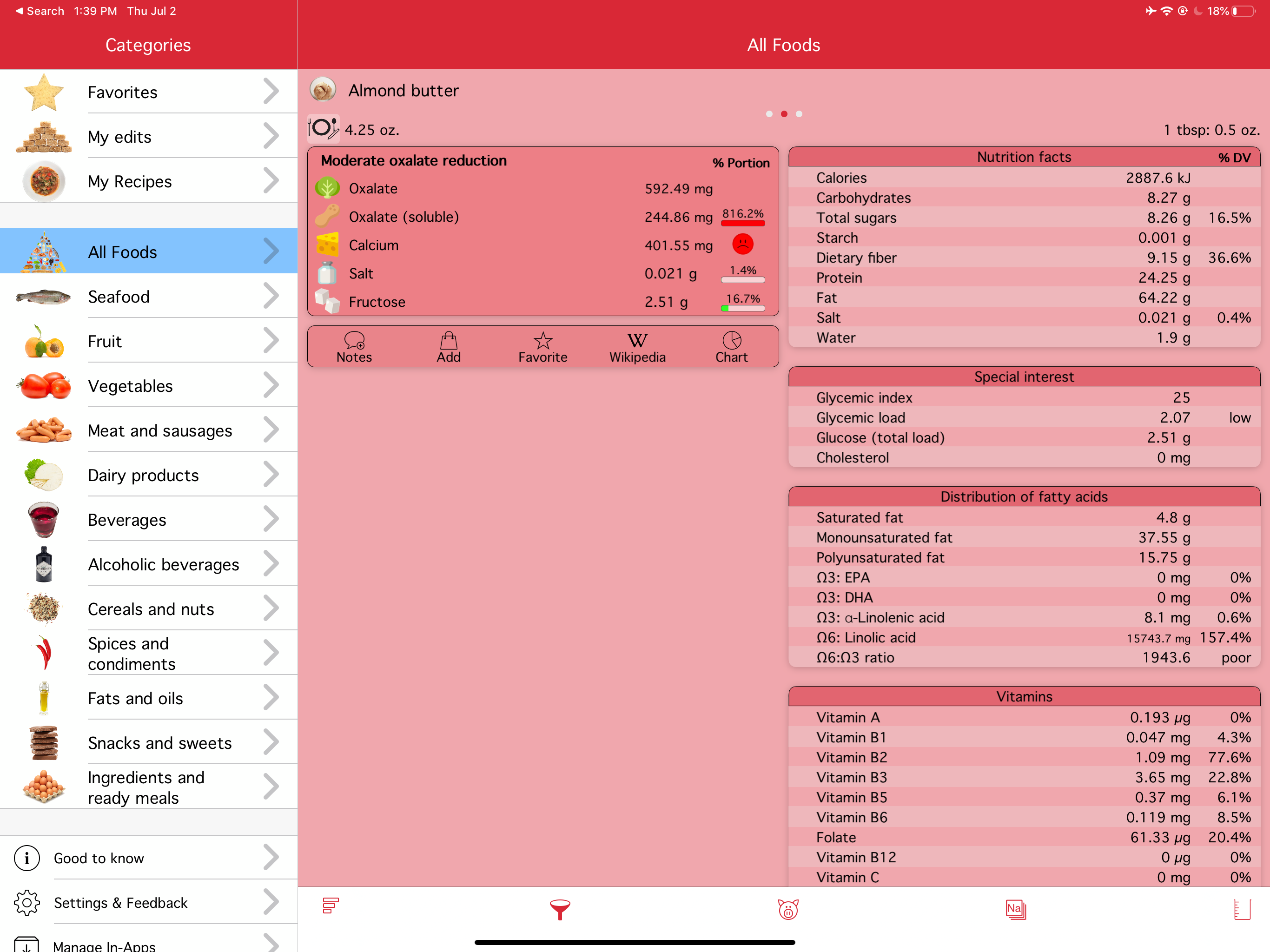People frequently underestimate the damaging effects of high oxalate levels within their system. Oxalates originally evolved in particular plant species as a deterrent to the animals wanting to consume them. (Obviously, if you’re a plant, the harder you are to digest, the less likely you are to be eaten.) But people neglect to understand that by interfering with human digestion, oxalate accumulation also contributes to a slew of chronic conditions that effect that entire body.
Like most dietary content, oxalates are typically broken down by the gut microbiome, properly excreted and processed without incident. The danger comes when it fuses with calcium that disperses itself in a spread of inflammatory over-absorption. The term “leaky gut” refers to the state of maldigestion when weakened intestinal mucosal barrier allow the wrong molecules to pass through their walls and enter the bloodstream. This loss of regulation sends oxalates into urine, tissues — and potentially to the regions of the brain that regulate hormones.
It’s a vicious cycle. Oxalate shards fail to break down in the gut, microbial overgrowth permits them to bind and thrive, and they tear at intestinal lining causing excessive inflammation. Before long, you’ve got chronic diseases playing out across multiple organ systems in a situation that will only continue to exacerbate itself without diet and lifestyle modifications.
Kidney stones, autoimmune diseases, irritable gut symptoms — the scary reality is these conditions build up slowly over time, sometimes barely registering in our awareness until it’s too late. Take urinary stones for example. Nobody plans a 3am trip to the ER because they woke up feeling like a knife was lodged in their kidney, but eight out of ten kidney stones are classified as calcium oxalate stones. That stone that has you writhing in the waiting room has actually been in the process of forming over weeks, months and even years.
Combatting both oxalate levels themselves, along with the conditions they inflict, requires a threefold approach:
- Improving gut health by curbing microbial overgrowth
- Monitoring incoming oxalate in the foods you eat
- Taking the supplements that will counteract their danger
Correcting Microbial Overgrowth
Most healthy adults harbor trace amounts of candida yeast within their digestive tract. Healthful bacteria like probiotics will typically keep it in line, but when antibiotics, consuming too much sugar and other factors offset one’s microbial balance, candida can get out of hand — sometimes to the point of infection — and accelerate oxalate production.
The better you can attend to your gut health by treating and preventing candidiasis (yeast infections) the better you’ll limit oxalate production and the barrage of health liabilities it presents. Eliminate any food with yeast or excess sugar so the infection has nothing to feed on. Olive leaf extract is an excellent herbal formula that helps reduce yeast overgrowth in the gut and skin.
In addition to minimizing microbial overgrowth in your gut, remember to rotate in fermented foods such as kimchi with high levels of lactic acid bacteria (probiotics) that aid in the breakdown of oxalate molecules and fight against those sharp calcium clusters that tear up your intestines. These strains of good bacteria are essential to a balanced microbiome and must be regularly replenished.
Monitoring Oxalate Intake
Now is the time to familiarize yourself with the foods and dishes that might be filling your gut and body with an undue volume of oxalate excess. The Oox App for the Dietary Management of Kidney Stones and Gout brilliantly lists and describes a variety of potentially problematic food, and the amounts of oxalate they contain, plus more. Get the Kidney Stones tool (highly recommended to get the upgraded version for $4.99) and use it as a fast and accessible resource for planning meals and double-checking the oxalate levels you’re likely to encounter.

Of course, you won’t have to place a ban on every food you enjoy, but this is an easy way to keep track of just how much oxalate you’re consuming and ensure that your total intake isn’t more than your gut can sensibly handle.
Use the app to count up how much oxalates you are eating per day in milligrams. There are two types of oxalates you can count up that is in the OXX app– oxalates and soluble oxalates. Soluble oxalate means how much you are absorbing into the blood stream and oxalate is referring to the total amount of insoluble and soluble oxalates. I look at the total number of oxalates ingested, not just the soluble. Insoluble oxalates that’s not absorbed directly into circulatory system can still cause a great deal of discomfort and inflammation in the digestive tract.
Once you know your total, cut the number of milligrams by half, and that will be your daily allowance for 3-4 days. If your body feels good, then you can go down further by 50 mg less for another 3-4 days, until you have reached 150 mg of oxalates per day. For example, you are ingesting 500 mg/day of oxalates, divide it in half, then 250 will be your daily allowance of oxalates for a few days. Then go down to 200 mg of oxalates per day, after a few days, you can go down to 150 mg. This may be your daily limit for weeks, if not months. The more you have been eating oxalates, the longer it will take for you to cleanse out and minimize your symptoms. If you find that you are taking in thousands of milligrams, then cut it down by half again and again until you get to 250 mg, and then drop 50 mg every few days until you get down to 150 mg.
Some of my patients really feel good at 150 mg of oxalate intake, for others who are highly sensitive, they may do better at 100 mg per day.
If oxalates are one of the root causes of your chronic symptoms or illness, you will be pleasantly surprised how good you feel in a short period of time! Everything, from minor irritations like gas, bloating, constipation or diarrhea, to serious illnesses like fibromyalgia, rheumatoid arthritis, lupus, and eczema — all can be improved and potentially prevented.
Can Supplements Help?
Regardless of what’s on your plate, taking specific supplements alongside your mealtime food servings can drastically aid in oxalate reduction. Vitamin E, selenium, and arginine can fend off oxalate damage, and calcium citrate is your best friend. As it binds with the oxalates in consumed foods, it prevents them from absorbing into your body and invading your tissues and kidneys.
It may take weeks or even months to reduce oxalate crystals from forming internally, but once you reduce your body burden of oxalates, even kidney stones can be broken down and gently eliminated without pain! After a protocol of proper supplementation, urine samples will present with tiny glass-like crystals or sand — the remnants of stones that were broken up and passed without intervention.
Although calcium citrate with meals can mitigate oxalate overload, vitamin C (ascorbic acid) intake can increase the synthesis of oxalates in the body. Minimize your vitamin C intake down to 250 – 500 mg per day if you are prone to kidney stones and high oxalate symptoms.
Remember: lowering oxalate levels must be done slowly and methodically to avoid aggravating detox symptoms from “oxalate dumping.” This is a gradual healing process but, with diligence and attention, and by carefully following the recommendations above, you’ll be well on your way to a more optimized and disease-free life!





